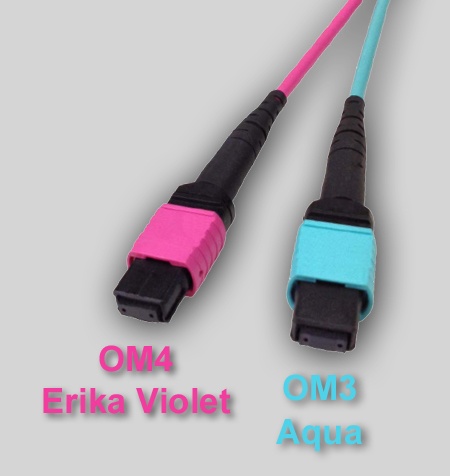Who is Erika Violet and What is She Doing in My Data Center
Centuries before Sir Isaac Newton started studying color at the age of 23 in 1666, mankind used color as a means of identification.
Color remains the easiest way to identify, recognize and classify just about anything, and it has always been an integral part of our industry—from the colors of individual fibers to the outer jacket of a cable.
Despite what you may have heard or seen, there isn’t a new lady or a new type of optical fiber in town. But there is a new color—Erika Violet—and she has a lot to offer when it comes to identifying OM4 fiber in the data center.
History Repeating Itself Isn’t Always a Good Thing
Do you remember the orange 62.5?m multimode fiber, otherwise known as OM1? When 50?m OM2 multimode fiber came on the scene, it too was orange.
When technicians see the same color cable in the same data center, it’s often assumed that they are of the same type. To truly differentiate, their only choice is to follow the cable back and carefully examine the tiny (sometimes illegible) cable legend or check their documentation. That’s precisely why the industry experienced countless issues with technicians inadvertently splicing orange OM1 to orange OM2.
One would think that we would have learned a thing or two since then. But when TIA/EIA approved the latest OM4 fiber in 2009, it remained the same color as its OM3 predecessor—Aqua.
So here we are with history repeating itself and technicians not having a way to easily differentiate between OM3 and OM4 fiber, especially when staring at the front of a panel where all the adapters look the same.
Enter Erika Violet (and Her Sister, Heather)
To solve the problem, the European market introduced a new violet color for OM4—known as Heather Violet in the UK and Erika Violet throughout much of mainland Europe. This new color has been accepted in Europe for nearly two years and adoption is on the rise.
Following the precedence set in Europe, several North American companies are now offering Erika Violet components as their new standard for OM4 fiber.
With Erika Violet cable, adapters and connector bodies now prominently displayed in pathways and at fiber panels, it’s easy to know for sure that it’s OM4. And even if fiber jumpers are color-coded per application, the connector body remains Erika Violet—mistakenly plugging in the wrong fiber jumper type is virtually impossible.
Why is She Really Here?
 While they might look the same, OM4 fiber offers better performance than OM3. And just like we saw with orange OM1 and OM2 fiber, when OM3 and OM4 are inadvertently spliced or connected at panels, it can cause performance issues that are difficult to troubleshoot.
While they might look the same, OM4 fiber offers better performance than OM3. And just like we saw with orange OM1 and OM2 fiber, when OM3 and OM4 are inadvertently spliced or connected at panels, it can cause performance issues that are difficult to troubleshoot.
With today’s optical loss budgets being more of a concern than ever as we prepare for 40 and 100 Gig, using an OM3 connector when you meant to use OM4 can push your loss over the limit. Furthermore, mixing the two can cause a loss of bandwidth and result in an increased bit error rate (BER) on links.
Not everyone touching fiber in the data center these days would know to carefully look at the legend on the cable and understand what it means. But anyone can match color.
So those specifying or purchasing OM4 fiber for the data center would be wise to remember Erika Violet. In addition to still offering traditional Aqua for OM4, Belden is one of the first to now also offer its OM4 fiber cable and connectivity in Erika Violet. Just ask for her by name.
